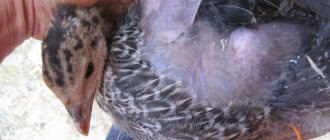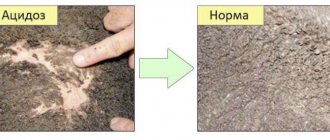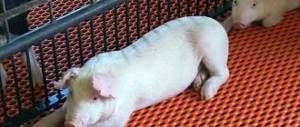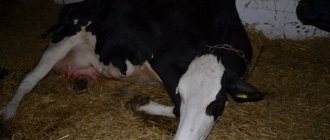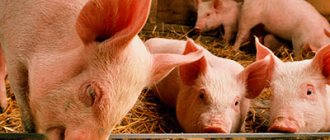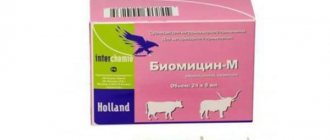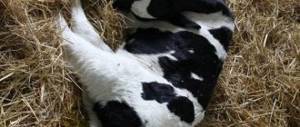0
14167
Article rating
Raising meat breeds of chickens also involves taking care of their health. The initial stages of the process are often complicated by diarrhea in broiler chickens. They may lose weight because the absorption of nutrients is impaired. It is necessary to take action immediately, otherwise the individuals will begin to die.
Reasonswp-content/uploads/2018/08/ponos-u-cyplyat-brojlerov-300×225.jpg 300w, https://pro100ogorod.ru/wp-content/uploads/2018/08/ponos-u-cyplyat-brojlerov -90×68.jpg 90w" sizes="(max-width: 600px) 100vw, 600px" /> Diarrhea in broiler chickens
First aid
spruce;
Folk remedies
y.
Infections are spread by rodents, birds and blood-sucking insects. The incubation period is 1-2 months. The disease can also occur during spring vitamin deficiency. In the summer, loose stools appear due to overeating greens. An accurate diagnosis must be made by a veterinarian after receiving the results of a stool test.
First aid
Treat diarrhea
Medications
conditions are not recommended on their own.
In order to alleviate the condition of the birds until the doctor arrives, the walking of sick individuals is limited and they are isolated from healthy ones. The chicken coop is disinfected, drinking bowls and feeders are cleaned.
Folk remedies
A bowl of sand and gravel is placed in the chicken coop and chalk is added. If the chicks are active and well fed, treatment of diarrhea in chickens is carried out using folk remedies:
- clay water - soldered for 2 weeks;
- hard-boiled egg, baked potato, dried rowan berries;
- oatmeal jelly;
- sour dairy products - pomo
Treatment of diarrhea
Therapy for diarrhea of any etiology is the elimination of the factors that provoked its occurrence.
Drug therapy and preventive measures
When the treatment is expected to be long and difficult, then you need to act according to the following scheme.
Stage 1. Taking antibiotics
Veterinarians usually prescribe an antibiotic.
Veterinarians usually prescribe an antibiotic
It is mixed into food or drink. It should be given for 3-5 days - it depends on the severity and neglect of the disease. Recommended drugs:
- Ciprofloxacin, enrofloxacin or norfloxacin - 10 mg of the drug per kilogram of live weight.
- Tetracycline, neomycin, doxycycline or biomycin - up to 10 mg for each chicken or twice as much for each sick adult.
- Complex preparations (aqueous solutions): Aquaprim, Quinokol, Trisulfone or Dolink, other similar products.
Stage 2. Taking probiotics
They should be given to sick birds to restore intestinal microflora:
- Fresh whey (milk).
- Curdled milk.
- Lactobacterin.
- Bifidumbacterin.
- Colibacterin and the like.
Stage 3. Taking fortified medications
Available in the form of a solution, mixed into food and taken for 5-7 days in a row:
- Chiktonik.
- Aminovital.
- Vitaminol.
- Hydrorexvital.
It is highly not recommended to give chickens sweet types of solutions. Sugar promotes the growth of pathogenic microflora, including salmonella.
The basis for the prevention of diarrhea in chickens is compliance with the rules of bird care, diet, temperature control and hygiene.
Be sure to read:
Why do chickens and chickens die - what is this disease and what to do?
Treatment with folk remedies
Traditional medicine is a good method to consolidate the loose stools of birds and ease the well-being of sick individuals. Experienced breeders recommend using:
- Clay (just a little). Dilute in bird's drink.
- Boiled rice It holds feces together well. The water in which it was boiled can also be mixed into the drink.
- Decoction of medicinal chamomile.
- Mix pomegranate peels into the food.
- Give the bird a mixture of mixed feed and oatmeal porridge.
These measures will serve as a good addition to the main therapy. Chickens will recover faster, restore digestion and healthy microflora in the intestines.
Infectious diseases
cerebral;
Pullorosis
drink dry red wine;
Medications
Activated carbon is given to absorb harmful substances. It is added to feed in crushed form. Diarrhea in broiler chickens when the first symptoms appear is also treated with medication. Until the cause of the disease is determined, broad-spectrum agents are used:
- Levomycetin – 1 tablet per 100 ml of water. You need to drink a couple of times a day.
- Biseptol – 30-40 mg 2 times a day for 5-7 days.
- Tetracycline – 1 tablet
Pasteurrelaiese
ovoka – 3 drops per head. Apply 3 times a day. Course – 4-5 days.
- Metronidazole – 1 tablet per 0.5 liters of water. Apply for 5 days.
- Furazolidone – 1 tablet per 1 liter of water. Use no more than 2 days.
If chickens have diarrhea, replace the water with a solution of potassium permanganate or furatsilin. These measures will help prevent dehydration in broilers. Sometimes they help get rid of diarrhea. This happens when diarrhea occurs due to poor quality food. If there is no positive dynamics, it is imperative to determine the cause and continue treatment.
Why do chickens get diarrhea?
Most viral, parasitic, bacterial diseases and infections can lead to the death of the entire litter. Diarrhea in small chickens requires immediate treatment. This symptom may signal a disturbance in the functioning of the digestive tract and indicate the development of any pathologies in the body of young animals. Therefore, if you notice diarrhea in broiler chickens, treatment should be carried out without delay.
Chicken Diarrhea
As a rule, bloody, dark brown, brown, white diarrhea in birds most often occurs due to poor quality, unbalanced feeding.
Advice! If chickens have loose stools due to infection, we recommend that you contact your veterinarian immediately. A viral or bacterial disease can cause the death of young animals. Sick birds will be prescribed effective therapeutic therapy, which will protect the entire population from death.
recommended articles:
- What to do and how to treat if rabbits have diarrhea?
- What to do if piglets are diarrhea?
After first consulting with a veterinarian, you can use proven alternative medicine.
In day-old chicks, diarrhea can be caused by a lack of proper hygiene in the chicken coop. Diarrhea and loose stools are often the result of highly fortified feeds and an excess of macro- and microelements in the chicks’ diet.
Important! If a bird has spring diarrhea, this condition provokes hypovitaminosis.
If chickens are diarrhea, irritation of the intestinal mucosa occurs, which leads to the inability to absorb nutrients that are necessary for the growth and development of the young bird. Diarrhea can cause dehydration and cause severe intoxication of the body.
If a bird has green feces of rare consistency, bloody brown diarrhea, or green excrement, then a series of diagnostic tests and droppings studies are performed to select the correct treatment. Let's consider what to do if broiler chickens diarrhea, how to treat the bird. Here are some effective treatment methods.
Infectious diseases
Very dangerous for small animals. When broilers become sick due to infection, the disease spreads quickly and soon affects the entire flock.
Pullorosis
Excites
Coccidiosis
almonella. The disease is also called typhus. Infection occurs directly or through drinking bowls, feeders and other equipment. Sometimes leads to the death of individuals. Humans are also at risk.
Symptoms
The disease is recognized by the following signs:
- white or green loose stools with clear mucus, sometimes foamy;
- film on slightly open eyes;
- lethargy, decreased activity;
- tilted head;
- open beak, rapid breathing.
Symptoms appear sharply in young animals. Diarrhea in day-old broiler chickens provokes developmental delays. Adults can carry infections without significant signs of illness.
Treatment
If measures are not taken, the disease will
Diseases that cause diarrhea in broilers
Broiler crosses almost completely lack innate immunity; in fact, they do not need it. Chickens grow quickly and are sent to slaughter early, which is the main value of broilers. The appearance of any disease in such chickens is a disaster, diseases spread very quickly, and in critical cases they cause mass death of the entire flock.
| Disease | Description |
| Salmonellosis | It spreads quickly among chickens (directly or through drinking bowls, feeders and other household items). White liquid stool has a foamy texture. Chicks that have contracted the infection behave inhibited, spend most of their time in one place, and are significantly smaller than other individuals of the same age. Breathing (through the beak) is frequent, difficult, if you listen you can notice wheezing, the eyes are swollen, watery, the cloaca is inflamed. In large farms, infected birds are discarded. Salmonellosis often leads to the death of chickens. |
| Coccidiosis | If you are sure that the cause of brown or yellowish diarrhea in chickens is poor nutrition, there is no particular cause for concern, just change the diet. If the food is good and balanced, and diarrhea does not go away, prepare to treat the livestock for coccidiosis. The aggravation occurs in spring and autumn; chickens become infected from each other and through household means. |
| Helminthiasis | Worms are the most common cause of diarrhea in broilers, and all poultry and animals can become infected with helminths. The color of the stool remains normal, but parasites can be seen in it. It is necessary to treat not only individual animals for helminthiasis, but all domestic animals. |
| Pullorosis | The disease is dangerous for birds of any age; if treatment is not started in time, pullorosis will become chronic. A sick bird has no appetite, sits in one place, lowers its wings, and looks sleepy. Due to copious discharge from the beak, the chicken tries to wipe the mucus on its feathers. |
| Pasteurellosis | Another name is bird cholera, a serious disease that causes the death of the entire chicken population. It spreads with lightning speed and is practically untreatable. Signs of the disease - feathers are ruffled, the chicken is mussed, moves reluctantly, does not eat or drink a lot, the comb turns pale or blue, blood fragments are visible in the stool, copious mucus discharge from the nose, difficult breathing. On large farms, poultry infected with pasteurellosis are discarded; veterinarians recommend doing the same at home. |
| Gastritis | The cause is poor nutrition. Due to colic and pain, chickens behave restlessly or, conversely, move very reluctantly. First you need to put the diet and diet in order, provide the bird with warmth and dry bedding. To eliminate diarrhea, it is recommended to give Loperamide (1/8 tablet) to chickens for 2-3 days. |
| Histomoniasis | The disease affects the liver, signs are that the bird is not active, does not eat, lowers its wings, hides its head, the skin darkens, the body temperature drops. The cause of the disease can be non-compliance with sanitary conditions in the poultry house, improper feeding, or too close housing. Carriers are various insects and earthworms. The infection persists on household items. The spread of histomoniasis is facilitated by keeping birds of different ages in the same room. The weakest broilers are slaughtered; treatment will not help them. |
Attention!
Even a mild illness can become a big problem; a weakened bird, for example due to gastritis, is a target for more serious infections. The condition and behavior of broilers must be constantly monitored.
Prevention
ut all individuals die
Coccidiosis
Occurs when Eimeria bacteria enter the body.
The pathogen is carried by a sick bird. It is often found in food or water. If one individual develops an infection, it quickly spreads among others. The disease worsens in spring and autumn. It affects the liver. When bacteria attack the mucous membrane of the stomach and intestines, ulcers occur.
Symptoms
Chickens develop brown diarrhea. Sometimes it is black or dark yellow. Coccidiosis accompanied
How to identify a problem by the color of stool
The color of chicken droppings will help determine the cause of diarrhea.
Green
Green or green-white sparse stools with a high content of mucus and blood specks may be the result of an unbalanced diet, poor quality feed or the presence of pasteurellosis.
Pasteurellosis is very dangerous for birds
The infection is carried by mosquitoes, rodents, and insects. Liquid feces must be submitted for examination. Once the diagnosis is confirmed, therapy should be started as soon as possible.
If it is denied, review the food, replace rough and expired food with fresh and lighter ones. Pasteurellosis is very dangerous for birds. This infection leads to mass death of livestock.
White
White diarrhea is a signal of a lack of vitamins. The color of feces resembles liquid chalk and has a solid consistency. The chicken should be quickly isolated from the general population.
White diarrhea may also indicate the presence of pullorosis (salmonella) in the chicken. This is an infectious disease that most often affects the ovaries and intestines in adult chickens, and all the insides of a chicken at once.
Infection occurs through ingestion of low-quality food, water, feces, or eggs.
Symptoms of infection in adults:
- dysfunction of the digestive system;
- frequent breathing with an open beak;
- decreased egg production.
It is not profitable to save (treat) such individuals. Adults are sent for disposal.
Brown
Rare brown stools indicate infection with pathogenic microorganisms, such as coccids.
A chicken can become infected through chicken coop litter, contaminated feed or water.
Sick laying hens experience:
- loss of appetite to complete absence;
- brown, infrequent stools with mucus.
Be sure to read:
Why chickens lay eggs without shells: reasons and solution to the problem
Sick individuals sit on a perch for a long time, closing their eyes. To establish a diagnosis, laboratory tests are performed.
Yellow
Lemon-colored stool is evidence of improper care and feeding of chickens.
Sparse yellow stool may also indicate the development of Gumboro disease. To confirm or refute this diagnosis, it is necessary to examine the feces in a laboratory or autopsy the dead bird.
Orange droppings in broilers also appear after stress, for example, after chickens move to new living conditions.
Bird flu
This disease also causes diarrhea in broiler chickens. It is transmitted mainly through droppings and airborne droplets. At home, infection occurs through water, food, and equipment. Highly pathogenic viruses pose a danger to humans.
Symptoms
The flu is accompanied by the following symptoms:
- green or yellow loose stools;
- temperature above 40˚С;
- lack of appetite;
- sudden weight loss;
- wheezing;
- inflammation of the mucous membranes;
- thrown back head;
- black comb and earrings that swell;
- beak foam;
- convulsions.
Treatment
To combat the disease, veterinarians often prescribe the antibiotic Levomycetin. The tablet is ground into powder and added to the food. This will help hide its bitter taste. For 1 kg of weight you need to give 30 g of the substance.
Broiler diseases: signs, causes
Many infectious diseases of domestic animals, including birds, pose a danger to humans. To avoid infection, you need to follow the rules of hygiene: use respirators, masks and gloves, enter the poultry house in boots, wash and disinfect your hands and clothes, and, if necessary, get preventive vaccinations.
Diarrhea
What to feed broilers at 2 months at home
Diarrhea caused by helminths, bacteria and viruses is the most dangerous. In this case, you cannot do without the use of antibiotics and special medications. There are several of the most common chicken diseases:
- Salmonellosis. Characterized by white droppings, sometimes with foam, increased temperature and lethargy. Adult birds are a source of bacteria and carry the disease in a chronic form.
- Pasteurrelosis (bird cholera). The disease develops at lightning speed and leads to the death of the bird. It is recommended to destroy the infected bird, since a complete cure is very difficult to achieve. In addition to green diarrhea, there is a high temperature, mucus from the nostrils and wheezing breathing.
- Coccidosis (eimeriosis). The disease can be detected even in the initial stage by ruffled feathers and brown (yellow) diarrhea with foam and blood. Chickens' crops and legs swell. Outbreaks are typical in spring and autumn, when the level of immunity decreases. Infection occurs through contact with a sick bird or equipment. Significant thirst and pallor of the combs and beard are noted. Sick birds are immediately isolated and treated. Any delay can lead to death. The remaining birds and the chicken coop are treated for preventive purposes.
- Histomonosis. It is dangerous for birds walking outdoors, as it is transmitted through soil worms and arthropods. Characteristic signs are darkening of the skin on the head to black, a drop in temperature, drooping wings, and the desire to hide the head under the wing. Chickens usually recover if treatment is started without delay.
- Pullorosis (bird typhus). The disease is accompanied by debilitating diarrhea, leading to dehydration. Diarrhea ranges in color from white to brownish-green. If left untreated, the bird dies within 3-5 days.
- Gastritis. It develops when broilers are not fed properly and is manifested by diarrhea, colic and a depressed state. By normalizing the feeding regime and diet, the problem is solved.
- Bird flu. The disease develops quickly and is often fatal. Diarrhea is frequent and profuse, yellow to green in color. The bird's comb and wattles turn black, wheezing appears, foam appears from the beak, the head falls back and convulsions are noted.
Important! If there are obvious signs of pullorosis, veterinary instructions prohibit treating the bird, which is associated with the danger of human infection.
Gastritis
If the chicks become pregnant, the reason may lie in problems with the gastrointestinal tract. They occur more often with poor nutrition.
Symptoms
The chicken feels pain and suffers from colic. He looks unkempt. Symptoms:
- clear diarrhea;
- refusal of the usual diet;
- thirst.
Treatment
You can overcome gastritis on your own. Babies are fed boiled yolk. Hemp flour is added to it. Normalize the diet, change the bedding. The drug Loperamide is also used. Dosage according to the age of sick individuals.
Helminthiasis
If birds have diarrhea, it is worth checking them for parasites. More often they affect month-old broilers. Sources – food, water, dirty room. Helminths reduce the immunity of individuals. Without appropriate treatment, they lead to the death of half the herd. They infect other domestic animals and humans with worms.
Symptoms
Suspicion of the presence of helminths arises from the following signs:
- liquid yellow stools;
- decreased appetite;
- developmental delay;
- hard breath;
- feathers stuck together around the cloaca;
- light comb.
Sometimes parasites are visible in the stool. Otherwise, they are submitted for analysis to confirm the diagnosis.
Treatment
There are many means to combat helminths. The broad-spectrum drug Alvet is often used. Apply it for 2 days. treatment is carried out in a group way. Dosage – 0.5 g per 10 kg of live weight. The substance should be given when more than 10 hours have passed since the last feeding. The chicken coop is disinfected with a solution of caustic soda or carbolic acid.
Kinds
The cause of the problem can be determined based on the color of the broiler feces. In addition, you should pay attention to accompanying symptoms.
Green
A greenish tint indicates intoxication or infection of the bird’s body. In this case, there is a sour smell and an increase in body temperature. Sometimes overeating is a negative factor, but then the diarrhea disappears after 3-4 hours.
Treatment consists of taking antibacterial and antitoxic drugs.
Brown and yellow
Colors from brown to black, as well as from light to dark yellow, indicate the penetration of an infection into the body - eimeria - against which coccidiosis occurs. The bacterium lives in any habitat, so infection occurs as follows:
- through insects (through blood);
- from rodents;
- through food and water;
- from equipment, bedding, perches and dishes.
Specific signs of the disease:
- depression;
- decreased appetite;
- yellowing of mucous membranes;
- flatulence;
- impaired “gait”;
- ruffled feathers.
Treatment is with antibiotics, since the parasite is localized on the walls of the gastrointestinal tract, carrying out destructive actions. In the absence of treatment, poisoning occurs with waste products of pathogens.
White
If the stool is white, the diagnosis of pullorosis is established. The disease has distinctive features:
- beak - open;
- eyes are half open;
- mucous membranes of the visual organs - in a film;
- head - tilted to the side;
- breathing - heavy with hoarseness;
- feces - with the smell of rot.
As the disease progresses, birds are destroyed. Individuals who are in the same chicken coop, but do not have severe symptoms, are treated with antibacterial agents after examination.
Diarrhea with blood
Liquid feces with the presence of blood particles is the most life-threatening condition for a broiler, since the cause is the neglect of any disease.
Most often, such diseases occur without symptoms, so it is important to carry out laboratory diagnostic measures. The reason for the appearance of blood is damage to the mucous membranes and walls of the stomach and intestines. It could be ulcers and the like.
Other types of diarrhea in broilers
Watery stools are divided into types depending on the cause:
- Salmonella infection – salmonellosis. The structure of the stool is foamy, the color is slightly white. Additional symptoms:
- decreased appetite;
- weakness;
- lethargy;
- inactivity;
- rapid breathing;
- wheezing.
- Helminthiasis – the presence of worms. The symptoms are the same as for salmonellosis.
- Avian cholera - pasteurellosis. It is characterized by rapid progression, high body temperature, brown or green feces. Feature - mucous sputum is released from the beak.
- Gastritis and other stomach pathologies. The symptoms are similar to those in humans.
To make an accurate diagnosis, the veterinarian must be told about all the signs that accompany diarrhea. Additionally, you need to take stool with you, which is sent to the laboratory for examination. This will identify the causative agent of loose stools.
Prevention
To prevent chickens from starting to diarrhea, you need to keep the room clean and regularly disinfect equipment.
Before buying birds, they burn through the walls of the chicken coop with a blowtorch. The diet must be balanced, the food must be of high quality. Greens are introduced little by little. To prevent vitamin deficiency, it is worth giving the chicks table salt and mixed feed. The transition from it to crushed grain is organized gradually. The water is changed every day.
Prevention
- vaccination against bacteria and viruses;
- do not allow broilers to come into contact with wild birds;
- quarantine newly acquired birds;
- cleaning shoes before entering the chicken coop.
To prevent bloody diarrhea in chickens, which is the greatest danger, it is worth taking a course of Baycox from 10 to 12 days. Two-month-old birds are treated with Promectin to prevent helminthic infestation.
[dzs_videogallery]
Causes of the disorder
Why does broiler diarrhea occur? Intestinal upset can result from many problems. Typical root causes of chicken diarrhea may be
poor quality feed. If there are more than 3 cases of the disease in the herd, it is worth checking the recently introduced feed mixtures for freshness. Only grain foods will have to be left. The reason why broilers diarrhea may be nervous breakdowns of the bird - due to ordinary fright or a change of place of residence. When the baby adapts to the proposed conditions, such symptoms will disappear. Colds can lead to the development of diarrhea in chickens.
If your pets are hypothermic, you should move them to a warm room for a couple of days. Check the house for drafts as well. Diarrhea occurs if poultry is in a room where it breathes chemical aerosols or tobacco. Another disorder in broilers can occur as a result of poisoning with the subsequent development of intoxication. Its factor is often the entry into the body of chickens of foreign objects or poisonous plants - buttercup, celandine, milkweed seeds. Watch out for food containers - copper and galvanized containers are not suitable for feeding poultry.
Diseases of broilers, the main symptom of which is white, green or brown diarrhea, includes pulloresis - it is also called avian typhus. The incubation period is 90 days, leading to death in young animals in the period from 3 to 7 days. Liquid yellow stool occurs in chickens if there is a helminthic infestation. Coccidiosis is an infectious disease accompanied by bloody diarrhea. The incubation period lasts 7 – 8 months. Pasteurellosis is avian cholera, which is characterized by the presence of green diarrhea with bloody spots. Salmonellosis is chicken paratyphoid fever, in which the bird suffers from foamy, loose stools. Bird flu is a viral disease accompanied by profuse diarrhea and often leading to the death of young animals.


